Charles-Edouard Jeanneret was thirty years old in 1917 when he finally settled in Paris where he pursued a variety of occupations. He began as a consulting architect in a reinforced concrete company, the SABA[3], for which he built a Water Tower at Podensac near Bordeaux (1917). In 1918, he founded the Société d’Entreprise Industrielle et d’Études (SEIE) whose activity was centred on a brick works near Paris. This inconclusive experience was to end with the bankruptcy of the company in 1921.
BIOGRAPHY
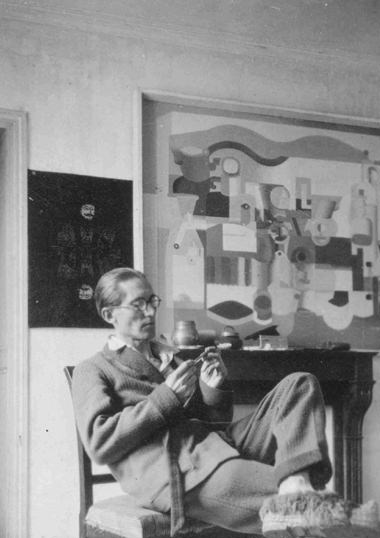 Charles-Édouard Jeanneret dans son appartement rue Jacob à Paris, vers 1920
Charles-Édouard Jeanneret dans son appartement rue Jacob à Paris, vers 1920
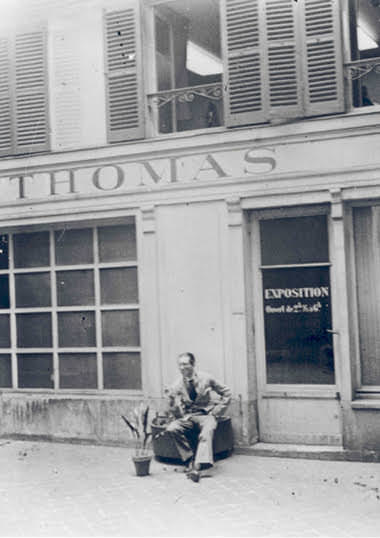 Charles-Édouard Jeanneret devant la galerie Thomas, Paris, 1918
Charles-Édouard Jeanneret devant la galerie Thomas, Paris, 1918
In 1918 there took place a decisive meeting with the painter Amédée Ozenfant (1886-1966), who introduced him to painting and urged him to adopt “purism”. Together they exhibited their work at the Galerie Thomas in Paris and wrote the manifesto After Cubism[4], published in 1918.
Little by little, the combination of the Dom-inO construction system and the aesthetic principles of Purism, applied for the first time in the Ozenfant Maison-Atelier (Paris, 1922), made it possible for Le Corbusier to develop a new architectural language. Its principles were set out in the review L’Esprit Nouveau, founded in 1919 with the poet Paul Dermée.
 Villa Jeanneret-Perret, La Chaux-de-Fonds.
Villa Jeanneret-Perret, La Chaux-de-Fonds.Amédée Ozenfant, Albert Jeanneret et Charles-Édouard Jeanneret dans l'atelier
« L’architecture n’a rien à voir avec les styles »
« L’architecture est le jeu savant, correct et magnifique des volumes assemblés sous la lumière ».
Le Corbusier, Vers une architecture
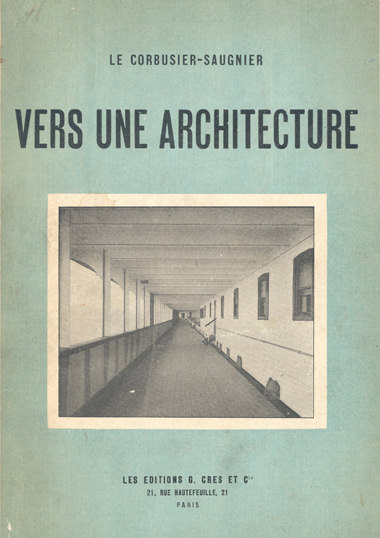 Vers une architecture, 1923
Vers une architecture, 1923
In 1920, using the pen name Le Corbusier he signed his first article on architecture, Three Reminders to Architects. This provocative title set the tone for an important theoretical production later taken up in his first books, Vers une architecture (1923), Urbanisme (1925) and L’Art Décoratif d’aujourd’hui (1925) [5].
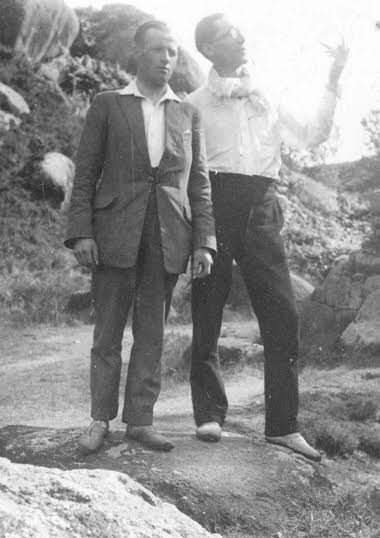 Pierre Jeanneret et Le Corbusier
Pierre Jeanneret et Le Corbusier
Unknown when he arrived in Paris in 1916, Le Corbusier acquired international status within less than ten years. In 1922 he opened an architect’s studio with his Geneva cousin, the architect Pierre Jeanneret (1896-1967). Together they completed an important series of individual houses or studio-residences for artists in Paris and its suburbs: the Maisons La Roche-Jeanneret (Paris, 1923-1925), Maison Cook (Boulogne-Billancourt, 1926-1927), and the villas Stein-de Monzie (Garches, 1926-1928) and Savoye (Poissy, 1928-1931).
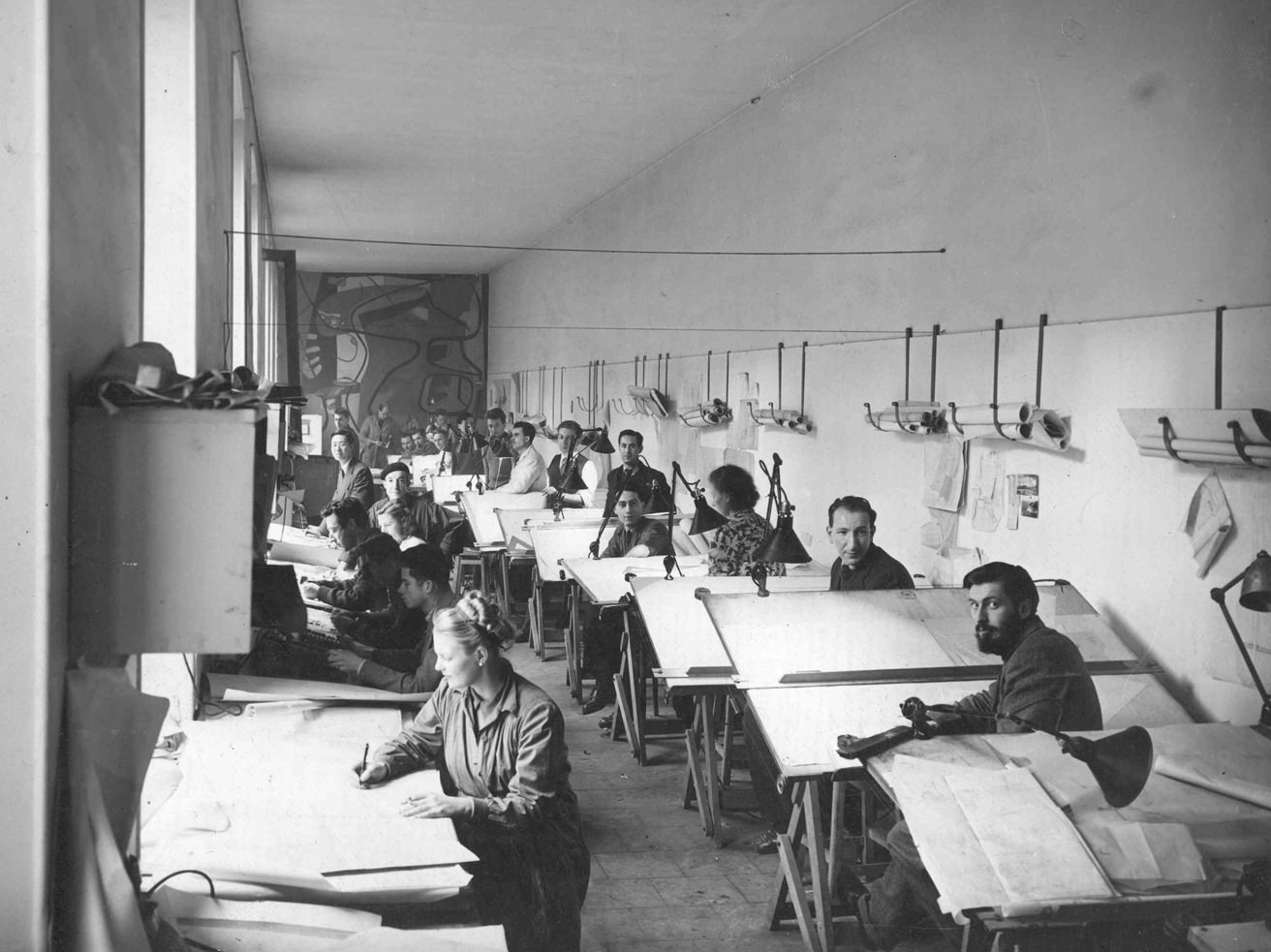 Les collaborateurs de Le Corbusier dans l'atelier 35 rue de Sèvres à Paris
Les collaborateurs de Le Corbusier dans l'atelier 35 rue de Sèvres à Paris
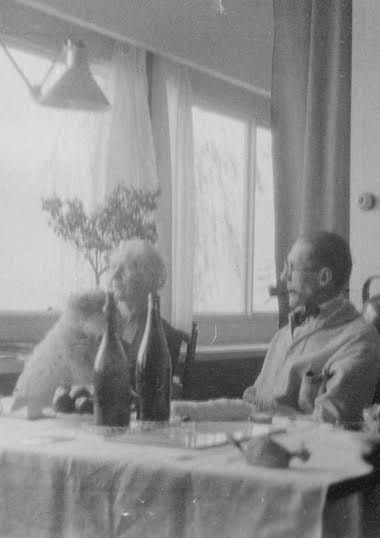 Villa "Le Lac", Vevey.
Villa "Le Lac", Vevey.Le Corbusier et sa mère Marie- Charlotte -Amélie
Their production also extended abroad with the Villa Baizeau (Tunis, 1929), Maison Guiette (Antwerp, 1926), and the house for Le Corbusier’s parents on the shores of Lake Geneva (1923-1925). Le Corbusier and Pierre Jeanneret were equally interested in the working man’s house and standardized housing, which for them, as for some other modern architects, represented a major social issue.
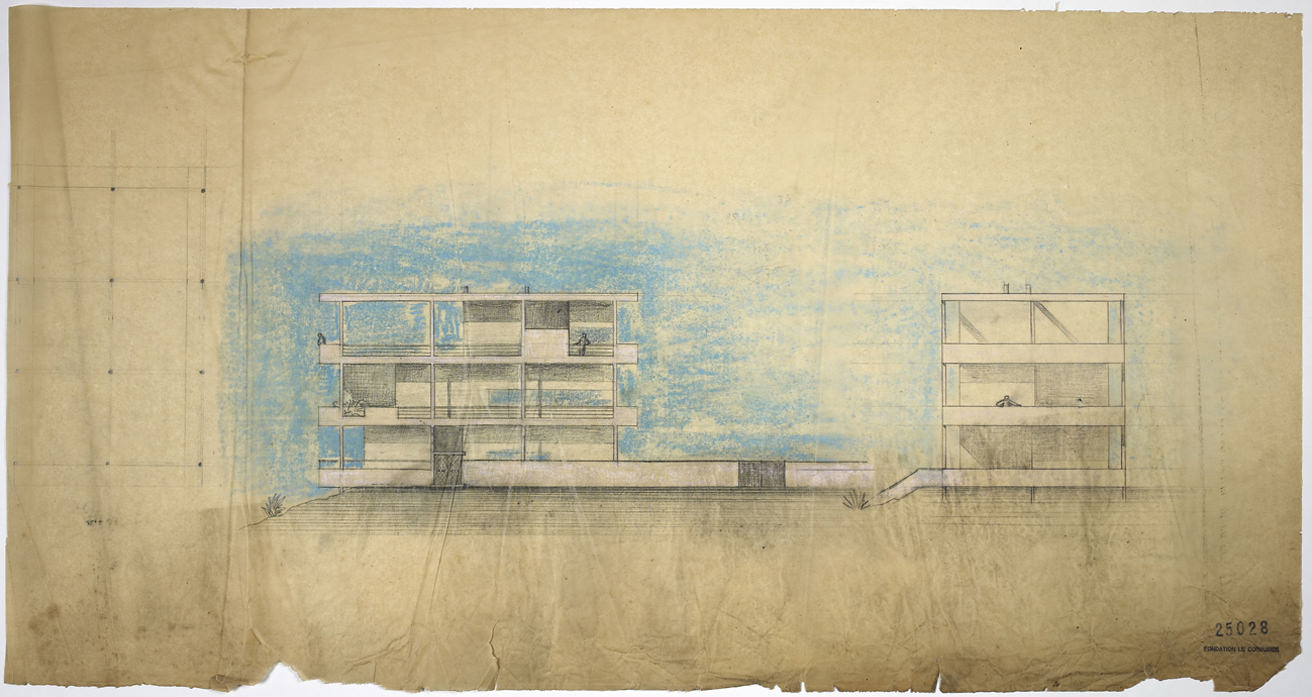 Villa Baizeau, Carthage, Elévation de façade, 1928
Villa Baizeau, Carthage, Elévation de façade, 1928
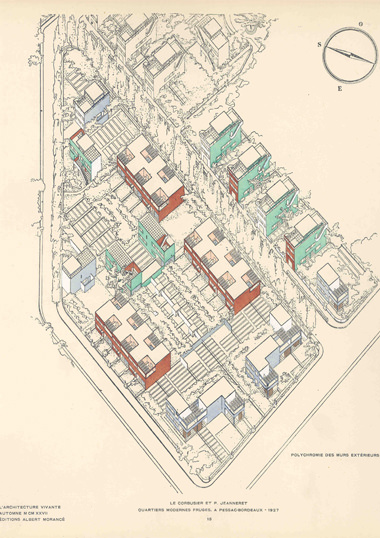 Cité Frugès, Pessac, 1924
Cité Frugès, Pessac, 1924Polychromie des murs extérieurs
They designed a number of theoretical projects, like the Maison CITROHAN (1920-1922) designed by analogy with industrial production as a “machine for living in”. Opportunities to apply these principles were however rare, arising mainly in Pessac, near Bordeaux, where they build some fifty houses in Cité Frugès (1924-1927), and in Stuttgart where, on the invitation of the Deutscher Werkbund, they built two houses as part of the famous Weissenhofsiedlung complex (1927). It was on this occasion that Le Corbusier set out his Manifesto of the Five Points for a New Architecture – Piles, Roof Garden, Free Plan, Ribbon Window and Free Facade – soon gaining recognition as one of the founding texts of modernity.
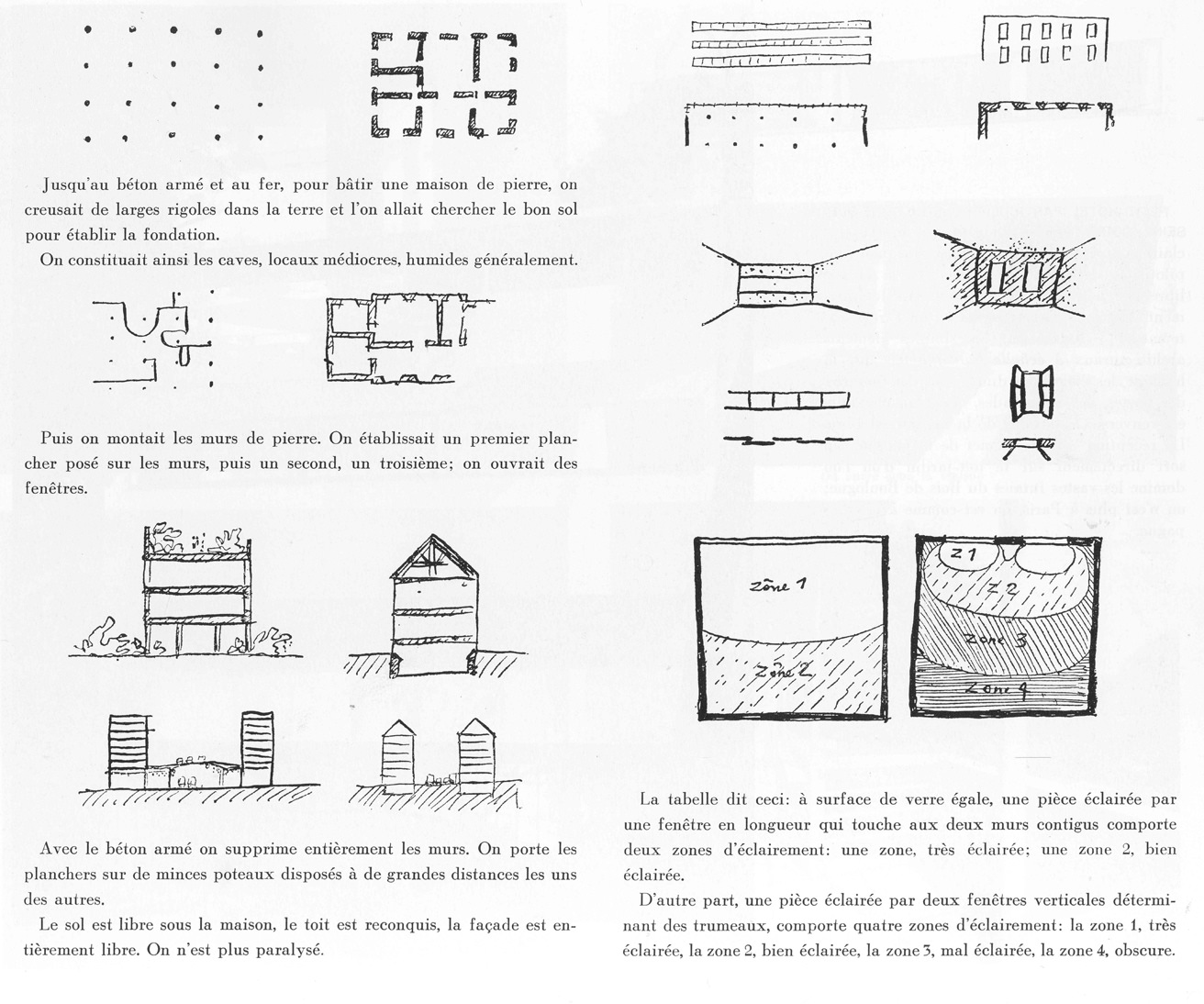 Les cinq points d'une architecture nouvelle
Les cinq points d'une architecture nouvelle
« L’architecture actuelle s’occupe de la maison, de la maison ordinaire et courante pour hommes normaux et courants. Elle laisse tomber les palais. Voilà un signe des temps »
Le Corbusier, Vers une architecture
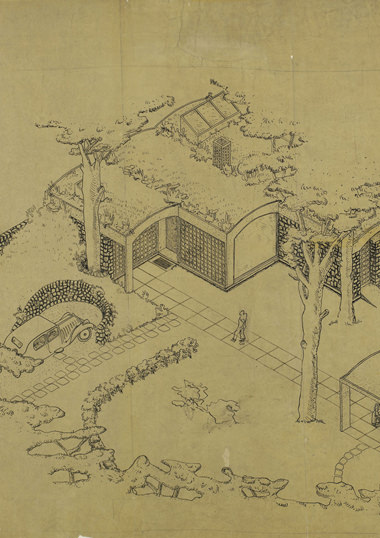 Maison de week-end, La Celle- Saint-Cloud,
Maison de week-end, La Celle- Saint-Cloud, 1934 Perspective à vol d'oiseau
The construction of the Villa Savoye marks the peak of this purist period but coincides with that of Maison de Mme de Mandrot in Pradet (1929) where Le Corbusier introduced a new, closer relationship with the site and adopted traditional materials on which light played in new ways. This new tendency announced the Weekend House (Henfel) at Celle-Saint-Cloud (1934), and the holiday home Le Sextant at Mathes (1935).
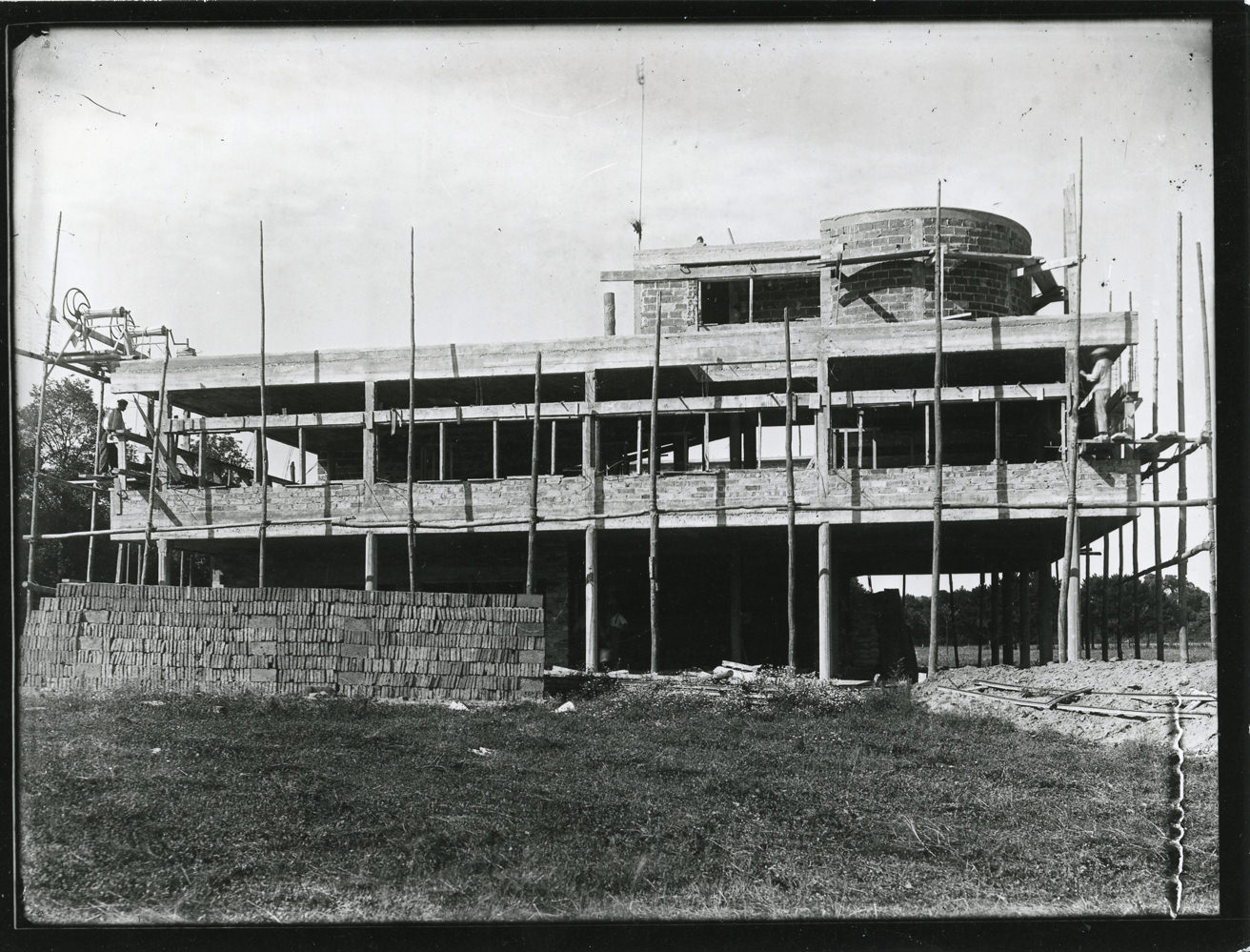 Construction de la Villa Savoye à Poissy.
Construction de la Villa Savoye à Poissy.
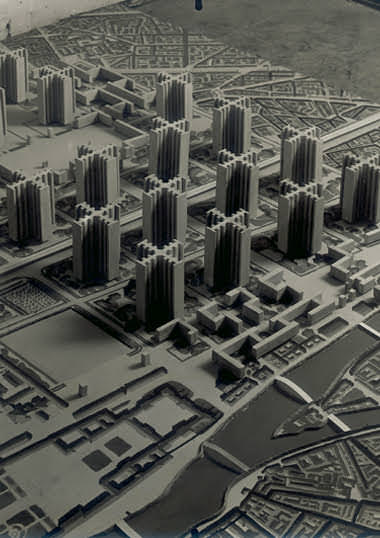 Plan Voisin, Paris, 1925
Plan Voisin, Paris, 1925
Le Corbusier and Pierre Jeanneret did not limit their thinking to architectural questions alone. At the Salon d’Automne in 1922 where they exhibited the CITROHAN housing project (its name being a tribute to the famous motor car manufacturer Citroën), they also presented an ambitious project for a City of 3 Million Inhabitants overturning received ideas in terms of urban development. Their activity in this area, with projects like the 1925 Plan Voisin arousing controversy and debate, was to continue throughout the interwar period and beyond.
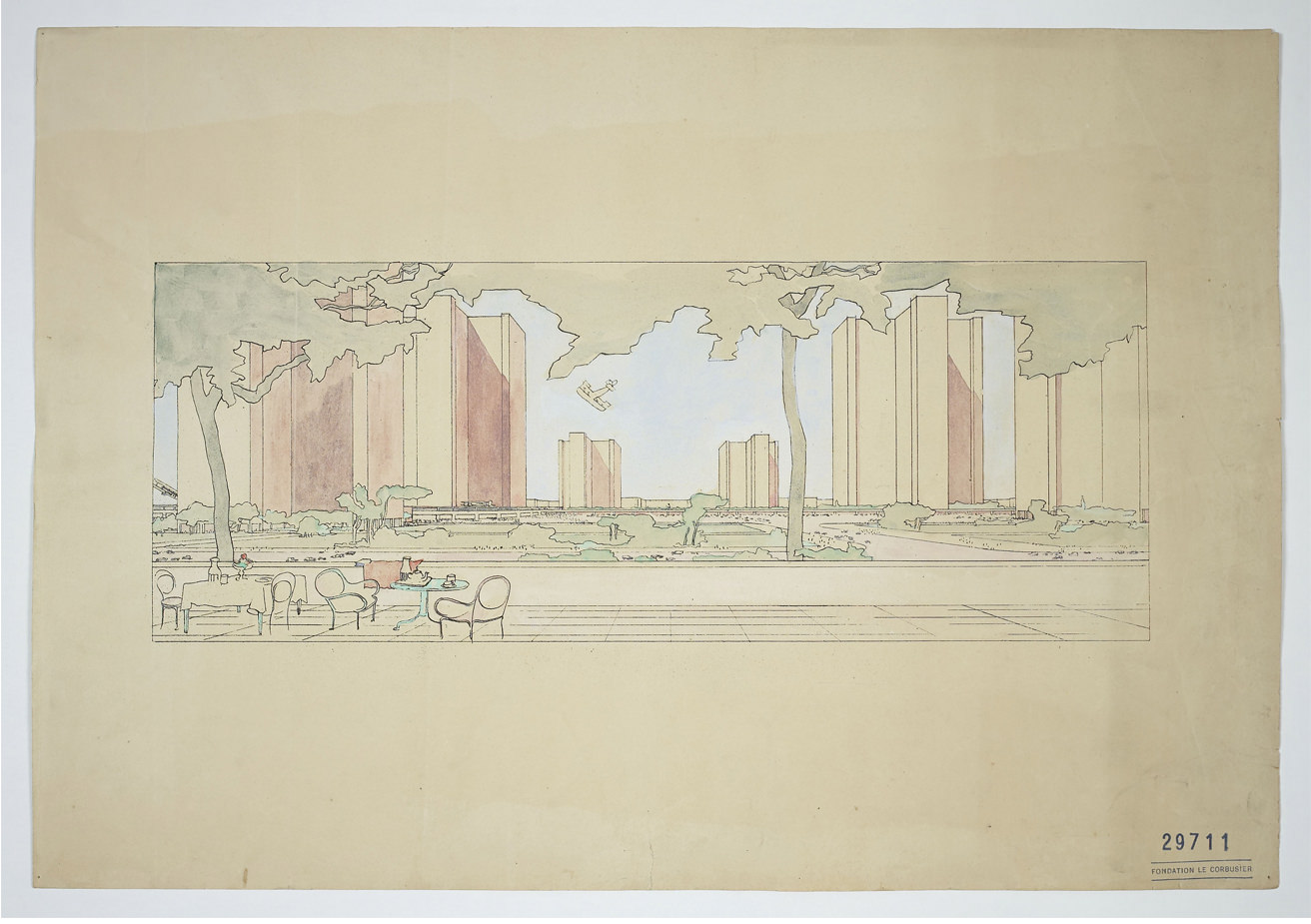 Ville contemporaine de trois millions d'habitants, Sans lieu, 1922
Ville contemporaine de trois millions d'habitants, Sans lieu, 1922Perspective d'un ensemble de bâtiments

